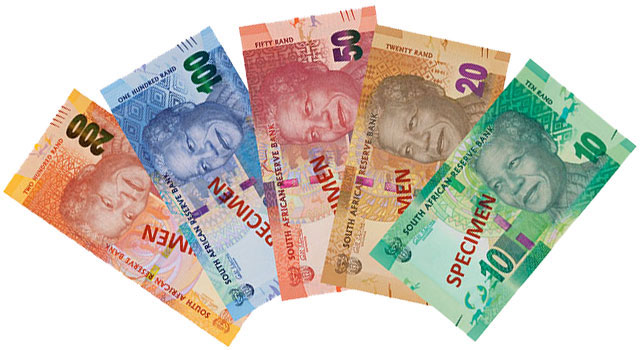
Investors are developing thick skins to political risk in South Africa. The rand is among the world’s top 10 best performers this year despite speculation that President Jacob Zuma may fire finance minister Pravin Gordhan.
Just 14 months ago, Zuma sent the currency crashing when he removed the respected Nhlanhla Nene from the post. The rand barely moved when Zuma’s annual address in parliament last week sparked a fist fight and riot police fired stun grenades outside.
Now Ebury Partners, the top rand-dollar forecaster over the past four quarters, thinks it’s unlikely Zuma will put markets through another “Nenegate”.
Investors are more concerned about faster-than-expected rate increases in the US and President Donald Trump’s trade policies, although those risks have improved the outlook for precious metals as traders seek safe havens.
That’s coupled with general positive sentiment across commodities as companies benefit from rising pricing across the industry, from iron ore to coal, which is good news for South Africa.
If there’s another political blowout in South Africa, there would probably be a selloff in the rand, but that could be a signal for investors to buy the currency, said Kevin Daly, a London-based money manager at Aberdeen Asset Management, which oversees about US$11bn of emerging-market assets.
Swissquote Bank agrees. “It would be a short term risk-off trade in the rand, but in the longer term that would purely be an opportunity in my book to reload on ZAR-long,” said Peter Rosenstreich, the head of market strategy at Swissquote in Gland, Switzerland. “The market is well aware of the political situation in South Africa.”
Zuma’s feuds with Gordhan have caused periodic spikes in credit default swap contracts, which some investors use as a gauge for risk. Gordhan was under investigation over the early retirement of a former colleague at the national tax agency, but the charges were dropped in October.
While political tensions persist, and Gordhan is still being investigated for allegedly overseeing a spy unit at the tax agency, the nation’s credit default swaps this week declined to the lowest level since December 2014.
The rand this week was on its longest winning streak since September, breaking through key barriers. It appreciated as much as 1,6% to R12,90/$ on Wednesday, the strongest level since August 2015.
Swissquote’s Rosenstreich says idiosyncratic risks are taking a back seat to the broader appetite for carry trades, when investors borrow where rates are low and invest in higher-yielding assets.
“The rand is one of those currencies that has very little political Donald-Trump-tweet-exposure, so it makes it one of those ideal currencies,” he said.
While the rand is the world’s most erratic currency, according to its one-month implied volatility, the measure has dropped to levels seen before Zuma dismissed Nene on 9 December 2015.
Local issues do pose risks, said George Herman, the head of South African portfolios and asset allocation at Citadel Investment Services, which oversees about $3,2bn. But the main drivers for the currency are external, “even in a year of South African political issues”, he said.
- Reported with assistance from Robert Brand

